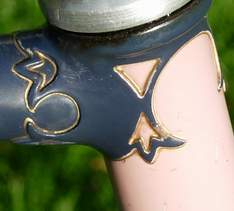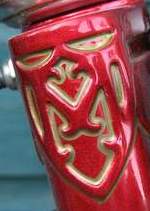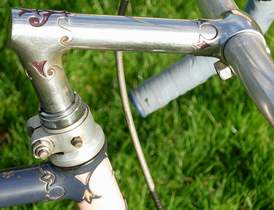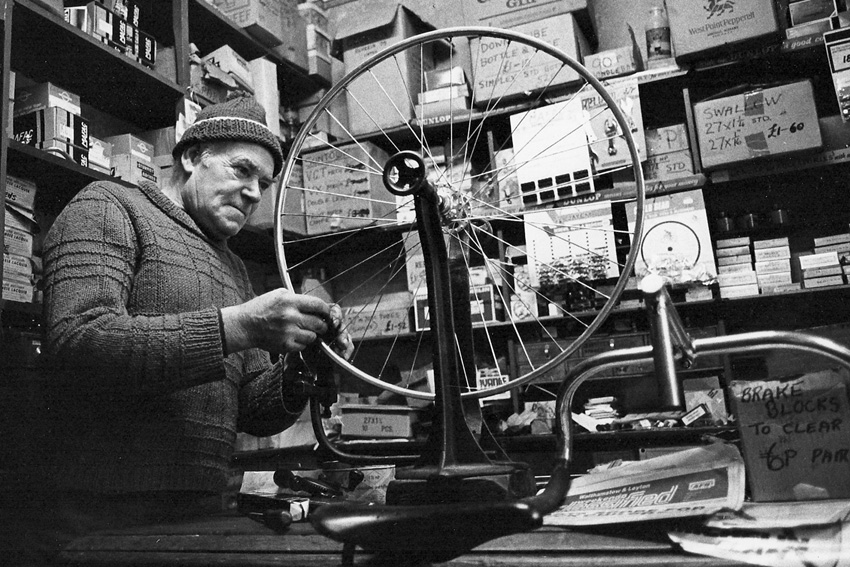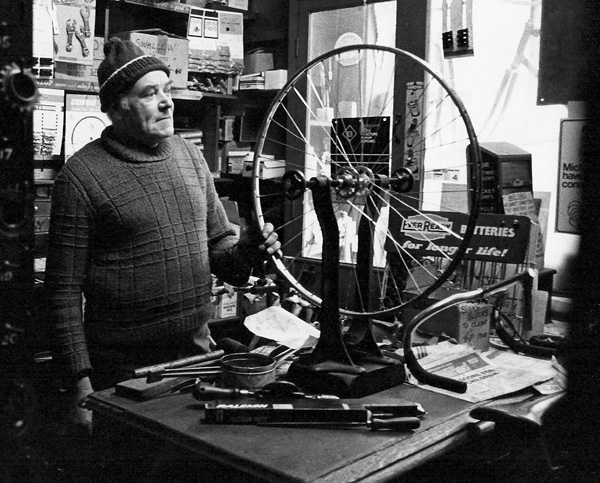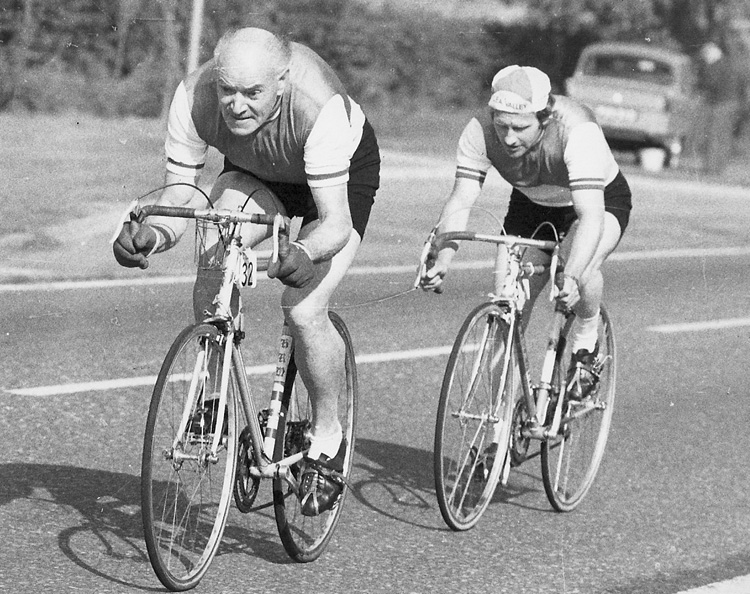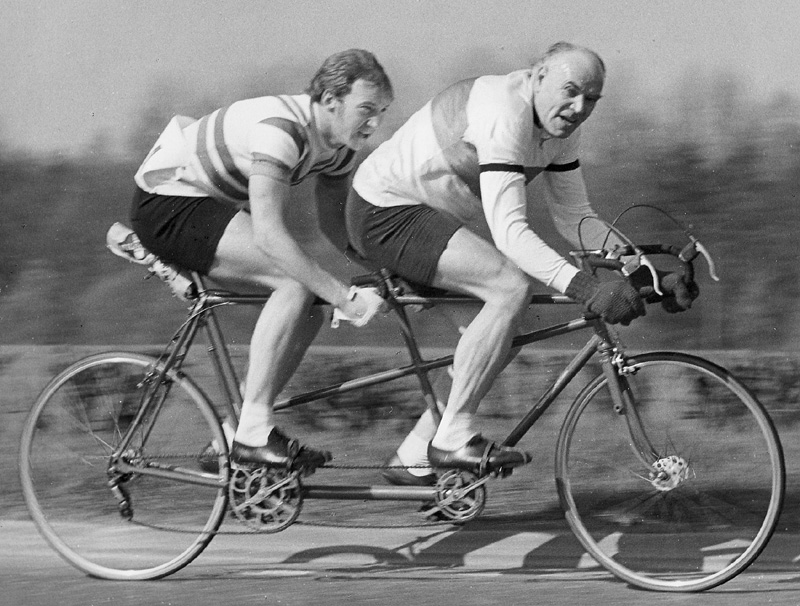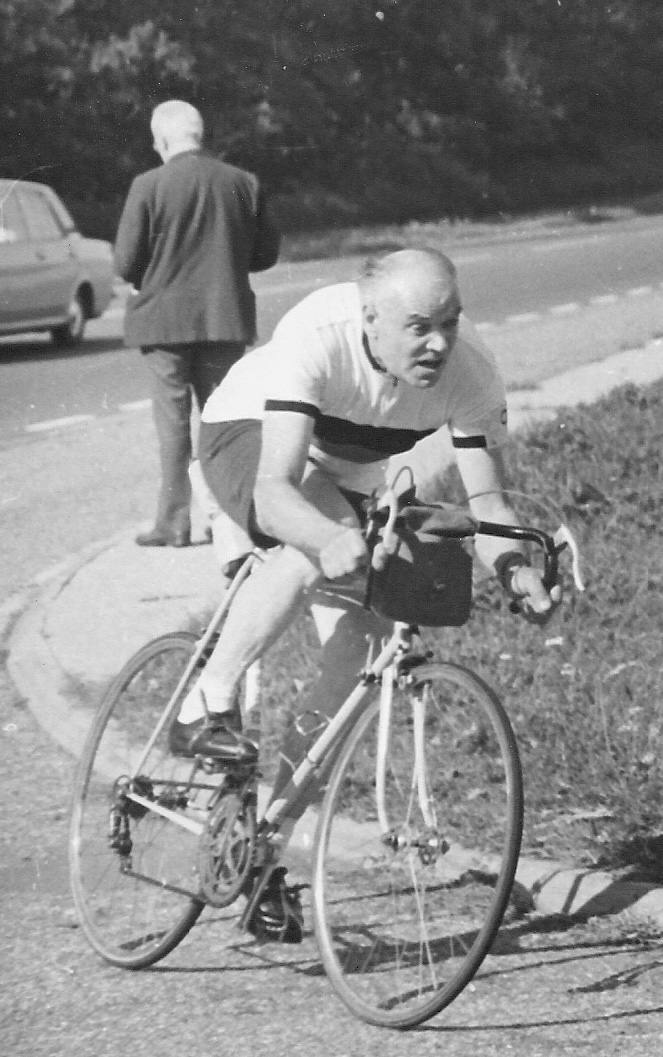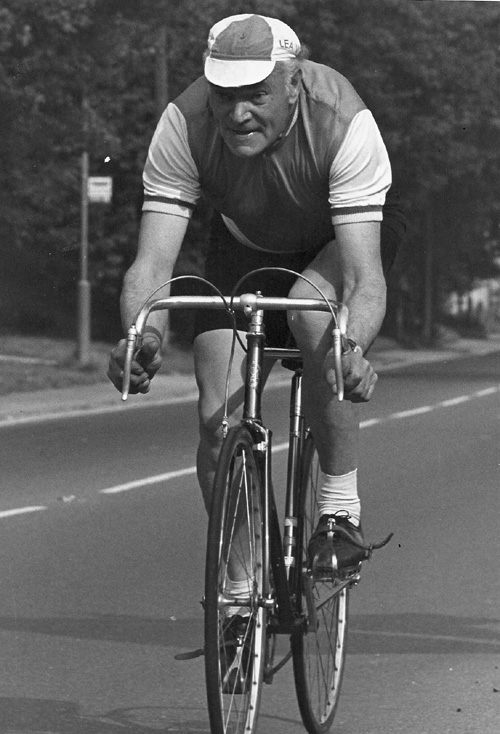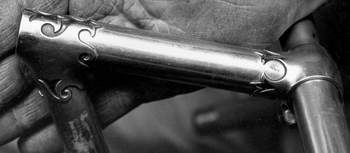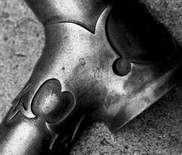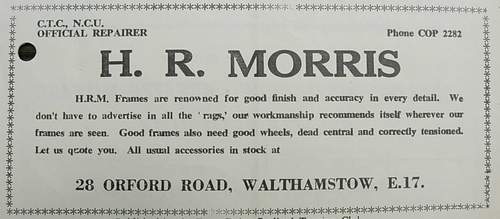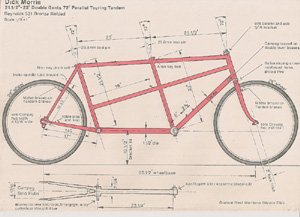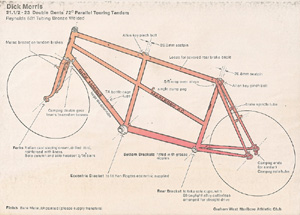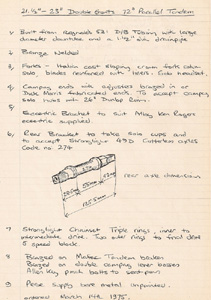Morris, H R 'Dick'
Posted: Sunday 07th June 2020
We are sorry to announce that H R (Dick Morris) passed away on 2 November 2010
He has, however, left us a legacy of his skills with a set of lugs which he cut when well into his nineties, proving he lost none of his expertise with advancing years.
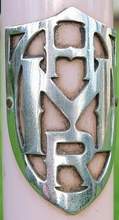
H R Morris was born into a large family at Walthamstow, London, in 1912. When he was at senior school (Marsh Street Boys – which he still thinks was one of the best schools in the area) he was taught both trigonometry and Pitman’s Shorthand as well as the three ‘Rs’. After two years in the top class he had the option to go into higher education at the William Morris School. However as was the case in many families at the time, money was very tight and he left school in 1926 to start office work for a Peter Hooker in order to help to pay his way. Although the wages were very poor, especially at his young age, every penny helped to balance the family budget. In those days most of his wages would have been earmarked for ‘housekeeping’, leaving very little to spend on himself – a strict contrast with the way finances are managed today.
He hated this first job in an office as much as he enjoyed cycling! He soon left and started working for a local cycle builder, F J (Fred) Sanders, who was not in great health as he had been gassed in World War I, along with thousands of others of course.
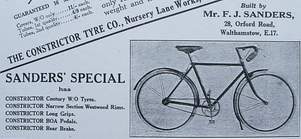
Fred had set up business at 28 Orford Road in 1919. In spite of his disability Fred taught HRM a lot about the craft of frame and cycle building and HRM enjoyed working there, becoming very friendly with Fred and his family for the rest of their lives. At the works they built both solo and tandem frames while Fred’s wife Winnie helped to run the business, doing paper work and serving in the shop. She also designed and produced cycle clothing, which they sold in large quantities, especially to tourists as they regularly advertised in the CTC Gazette. HRM wonders if the clothing side of the business was not the most profitable. The clothing was sent out for stitching but they had their own buttonhole machine. The frames they made were well built with good materials but not much attention was given to elaborating the lugwork in those days. HRM built his first frame there when he was 16 years old. It was for a friend who rode it for 22 years until it was destroyed in a road accident.
Being mad on cycling he soon joined his elder brothers in the East London Section of the NCU, joining in the Sunday runs which had 20-30 riders out most weekends. HRM used to take his own lunch to cut down on expenses but joined in the club’s organised teas which cost one shilling and sixpence. A regular stop was the Queen’s Head at St Albans where club members stood around the piano, played by one of the girl members, for a sing-song. He was also keen on swimming which he did at the local baths. He explains that at this time he owned just one bike which was second-hand but cherished and polished with love.
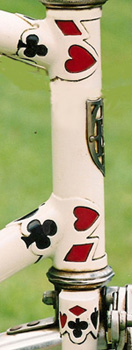
In 1927/8 he moved to the Century Road Club in order to take part in time trials. His three elder brothers were already members of the club. One of his older brothers owned a ‘Speedwell’ trike with Abingdon axle – HRM borrowed this and was to be keen on trikes for the rest of his life. His first event, in March 1930, was a 25-mile time trial starting at Biggleswade. His last time trial was again a 25-mile event starting from near Stansted in 1992 some 62 years later. At his first club dinner he met S F Edge, who at one time held the records for 24-hour events in both cycling and motor racing, the latter in a Napier car at Brooklands.
HRM explains that he took part in the sport purely for the love of cycling and to get away from Walthamstow at the weekends. He explains that they would ride to ‘digs’ on the Saturday afternoon, race very early on the Sunday morning and then have a club ride which would eventually take them home for Sunday evening. Even when riding a 12-hour race, they would still ride home afterwards probably covering about 270 miles in the day.
H R Morris supplied lug blanks to a customer who wished to cut the emblems into them.He was unable to do it to his satisfaction so H R M finished the lugs and built them into a frame.
When HRM was 17 years old (1929) he moved on to work for C Bertrand and Co. in Finchley, North London, where he enjoyed being involved in the production of much better finished machines. This was another man and wife business. HRM cycled to and from work every day whatever the weather and found it a pleasant and friendly place to work. Bryan Clarke remembers HRM telling him that George Dean was the frame builder at Bertrands.
In 1937 HRM was planning to get married and needed more cash so he moved to Bates Bros. at Plaistow in East London. (Here he became very friendly with George Dean. George and his wife Ivy would become godparents to HRM’s daughter – they are both now passed-on). His work and expertise was appreciated here at Bates and he soon became the general foreman insisting on high standards of building until 1938 when all or most of the technical staff left rather than signing up for the difficult working agreements demanded by E G Bates.
HRM said that a Mr Grimstead, assembled the frames, fitting the tubes & fluxing ready for brazing. One of the brazers was Teddy Bax. There were 2 filers, 2 lug cutters, 1 checker, 1 wheel builder and 2 assemblers. Bob Tregonning from the office took over the frame building after the walk-out but didn’t know much about the technical side. HRM remembers seeing Bates frames literally fall apart after the proper tradesmen left. The frames were poorly finished and out of track. The Bates brothers split the partnership after the war. There was a shop for parts next to the works but it was only open on Saturdays. This was run by Stan Butler.
He never went back to Bates after the troubles. He left the cycle trade and went to work as an engineer where he worked on parts being made for HMS Illustrious. The wages were poor here and he saw an advert for a fitter wanted to work building motors at Carrimore Six Wheelers Ltd, Great North Road, Finchley London N12.
He was asked if he could read blueprints and he explained that not only could he read them but he could, if needed, produce them. HRM had been studying Workshop Engineering Practice at the Polytechnic in the evenings as he had always been keen on maths and drawing office work. He was put onto designing and making jigs for war effort work. Using the documents he could then manufacture the parts. He started work where they were producing articulated lorries and other one-off special vehicles, most of which were wanted for the war effort. HRM stayed with this company for seventeen years and was in charge of inspection for the last seven. Whilst here he obtained two sets of 531 tubes and some lugs and set about building a couple of frames for himself. He worked on these in his spare time, at lunchtimes, etc. As he was not in a hurry to get these built he created the first sets of his extremely elaborate lugs with which to build the frames. He also made matching stems for them. He owned these machines for many, many years and eventually sold them to an enthusiast when he realised that he wouldn’t ride them again.
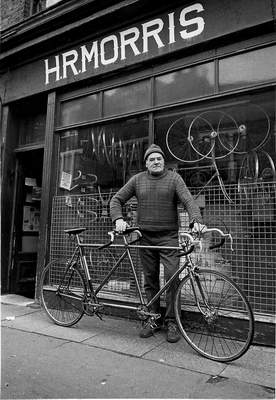
HRM had applied to join the RAF but was not allowed to enlist as he was doing such important war-related work at Carrimore.
By now he was married and had moved from rented accommodation to a house which he was buying. By chance he saw that the business at 28 Orford Road was up for sale (this is where he worked for Fred Sanders and Fred’s widow had decided to retire) and he decided that he had an urge to build bikes with his own name on them. This was around 1953.
When members of cycling club heard this, several put in orders straight away to have frames built. HRM actually badged the first few frames he built with F J Sanders transfers until he had his own made to his own design. His frame building and cycle works business was to last for 32 years.
One of the first machines to be built was a tricycle with a Ken Rogers axle. He later replaced this with another which he owned until very recently when he sold it to George Arnot, a good friend of his right through from the days when he opened the shop in Walthamstow.
Later on his son Keith helped him out in the business becoming very adept at building wheels and maintaining Sturmey Archer gears. However, the cycle trade was not to be for Keith, who went on to become an architect and chartered surveyor – he does however still enjoy cycling to this day.
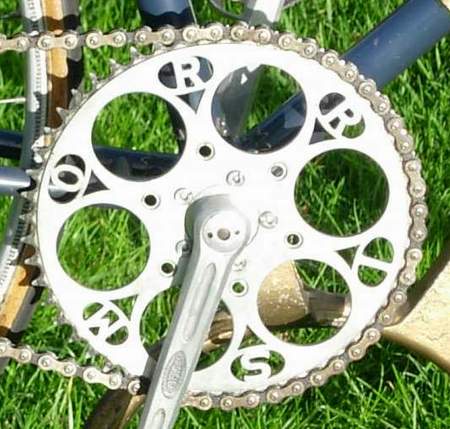
HRM built up his business on his reputation as a highly skilled craftsman and he built in the region of six hundred machines over the years. Many were conventionally built but from time to time he would lavish great care and detail into producing some the most exotic lugwork ever seen even to this day. These machines stand out from all others and are sought after by collectors all over the world. Some of the lugwork incorporated his initials and have to be seen to appreciate the skill used in producing them. Another design he has cut into the lugs was of the four suits used on playing cards.
Well into his nineties HRM still cycles regularly, having two trikes, an old Pashley as a hack machine, and a Rogers conversion kit fitted to a Dawes open frame. He is also keen on photography and lives not far from us at Cambridge.
Graham West of Marlborough Athletic Club supplied Dick with these impressive working design sheets and specification.
Although Dick Morris passed away in November 2010 he left us a legacy in the form of a set of lugs he cut when in his nineties. His intention was to have these built into a frame but sadly he died before this was done. The lugs were passed to a friend of the family who had himself been a frame-builder but recently retired. He is having the lugs built up into a period frame and then complete the machine build in memory of Dick.
Here we are able to show you the superb craftsmanship in these lugs before they are built into a frame and it proves that Dick lost none of his skills in his later years.
The frame is being built by Kevin Sayles at Woodrup Cycles and a visual record can be found here at:http://www.flickr.com/photos/kevin_sayles_bikes/
(Click on ‘H. R. Morris Frame’)
Top head lug – ‘HENRY R MORRIS’ plus fancy cut-outs and fleur-de-lis
Bottom head lug – ‘SANS PAREIL’ in Latin = ‘Without equal’, also with cut-outs and fleur-de-lis
Bottom bracket – with fleur-de-lis for all tubes. Many builders skimp around this area
Seat Cluster – balanced design to match head lugs and bottom bracket

There are five H R Morris machines in Readers’ Bikes
A few years before he died Dick Morris produced another set of lugs somewhat similar to the ones shown above, but with an abbreviation (SP) on the lower head lug rather than the latin quotation Sans Pareil:.
Posted: Sunday 07th June 2020
Contents
- Morris H.R.(Dick)
- Morris H.R.(Dick) Introduction
- Constrictor advert from Cycling
- H R Morris life
- C Bertrand
- HRM shop
- HRM work
- Some fine examples of H R Morris lugwork
- H R Morris with tandem
- H R Morris in his workshop
- HRM busines
- Special chainring work
- H R M wheel building Images
- Graham West
- Craftmanship at 90!
- Top head lug image gallery
- Bottom head lug
- Bottom head lug images
- Bottom bracket
- Bottom bracket images
- Seat cluster
- Seat cluster images
- Set of lugs
- Dick Morris images
- Machines in Readers Bikes
This article appears in the following categories.
Upcoming Events
Whether you are looking for a gentle social meet up, or a 100-mile ride browse the community’s upcoming events and plan your next weekend outing.

